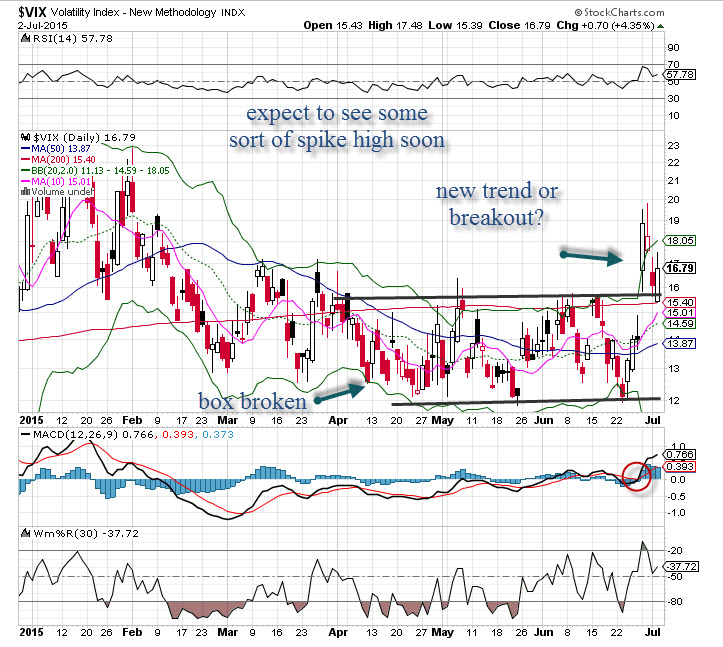It is not easy to win over investor sentiment. Anyone who lost money during the financial crisis can tell you how difficult it was to suddenly trust markets again, and there was the ‘flash crash’ afterwards that suddenly jolted any built up confidence. For its part, the Fed has done everything they possibly could to bolster investor confidence, the lifeblood to the markets. On record they have succeeded, but many would question the tactics. Yet six years in to the bull run many are questioning when it will end, how hard a landing will be and whether they can time an exit ‘just right’. That’s not my game, however.
But what is happening now with this Greece situation is akin to the games played back in 2011/2012. Remember all of that rhetoric and nonsense from the Euros? Saying one thing, doing another? The shored up confidence was once again destroyed but ultimately returned. We may see that happen again, but how much damage will be done? Yesterday’s massive drop on heavy turnover (institutional selling) due to immediate Greek news was a shocker – yet the Puerto Rican situation and China were the ‘trifecta’ along with Greece to make everyone ‘think hard’.
Many have been talking about a long needed correction, and how that would set up better prices, entries, etc. Well, markets are not that easy or ‘neat’. I’m not saying markets have to go up forever, we do have pullbacks and they reset the market. But how many big hits can investors take before a mind shift occurs? Something to think about as you ponder where to enter the market if you have been waiting on the sidelines. It’s a mental game.
Investors like to have some certainty. We can measure and analyze the ‘comfort level’ by using sentiment tools. We have talked before about volatility as measured by the VIX. High levels of complacency as seen in the chart are a major danger signal and augurs a potential selloff (such as what we saw last week). For several days the stock market has been under distribution (selling), so a reaction to the Greek news last week should not come as a surprise. With markets near all time highs, complacency high and distribution strong – that is a huge negative divergence. It showed up last Monday.
But we have had selloffs before, right? Hasn’t the market always snapped back? That is true, but at some point ‘buy the dip’ won’t work. At that point a shift in sentiment, action and risk will occur. We may be seeing this now, but I’ll reserve judgment.





